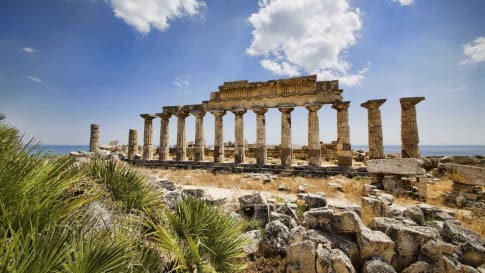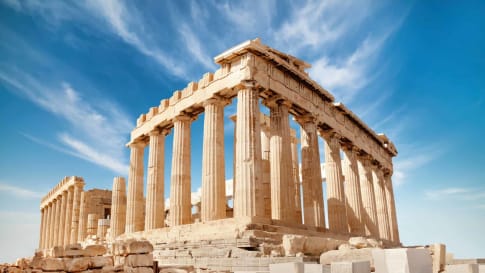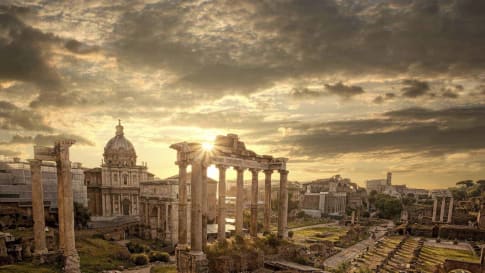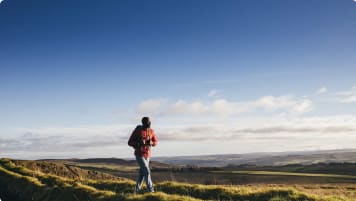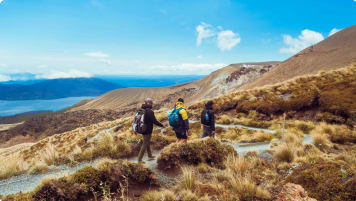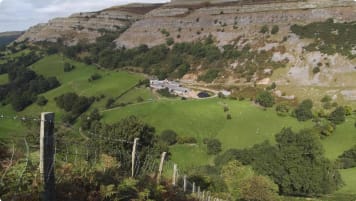Walking in Greece
Visits to UNESCO World Heritage Sites introduced by local guides feature on this walking tour for mature couple and single travellers. The days itineraries to selected destinations provide authentic experiences in the remote parts of Greece. A single supplement is charged for solo travelers on these small group journeys.
From £6,386GBP
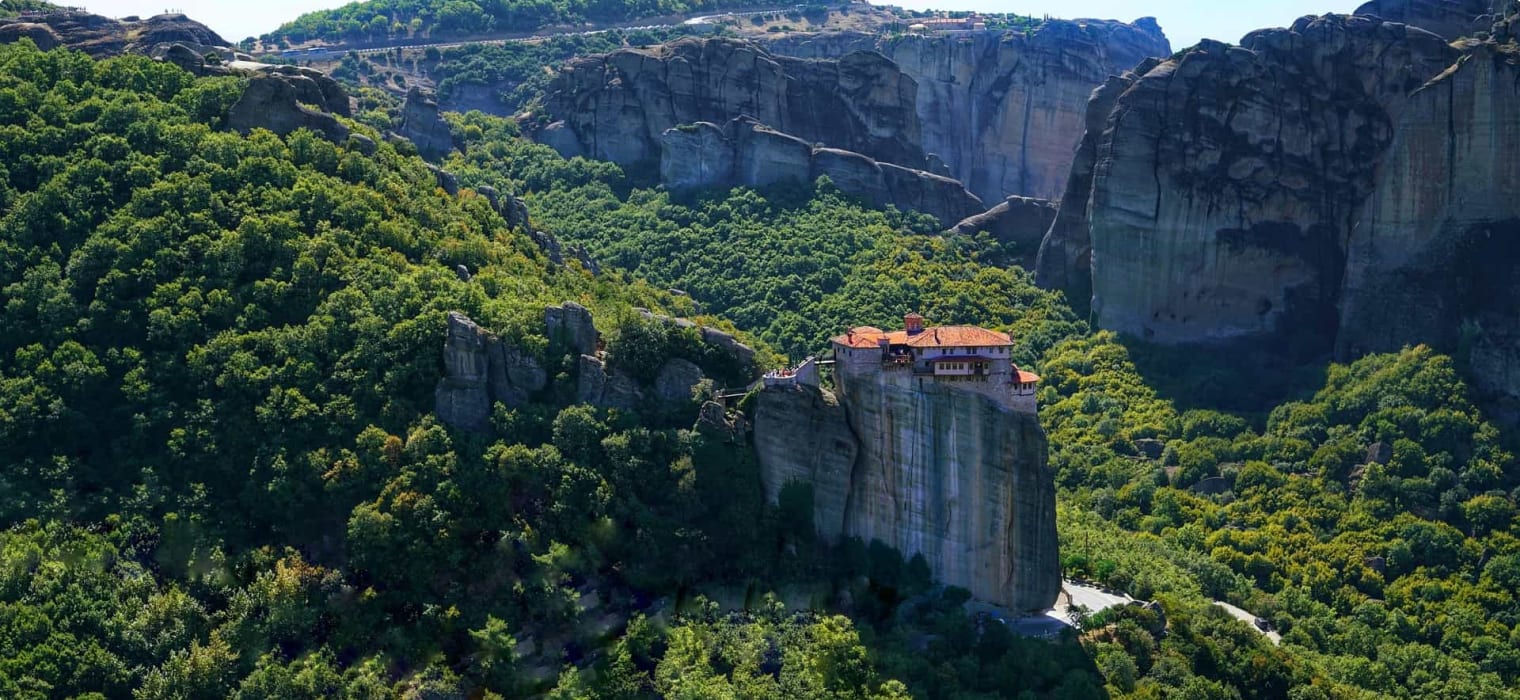
Highlights
- 1. Visit the mountain paradise of Papigo, located inside the Vikos–Aoös National Park.
- 2. Enjoy a breathtaking view of the Vikos Gorge, a cross-section of a mountain carved by the Voidomatis River.
- 3. Hike up UNESCO World Heritage Site, Meteora, enormous rock columns that are home to a large complex of Eastern Orthodox monasteries.
- 4. Walk up the slopes of mythical Mount Olympus, Greece's highest mountain.
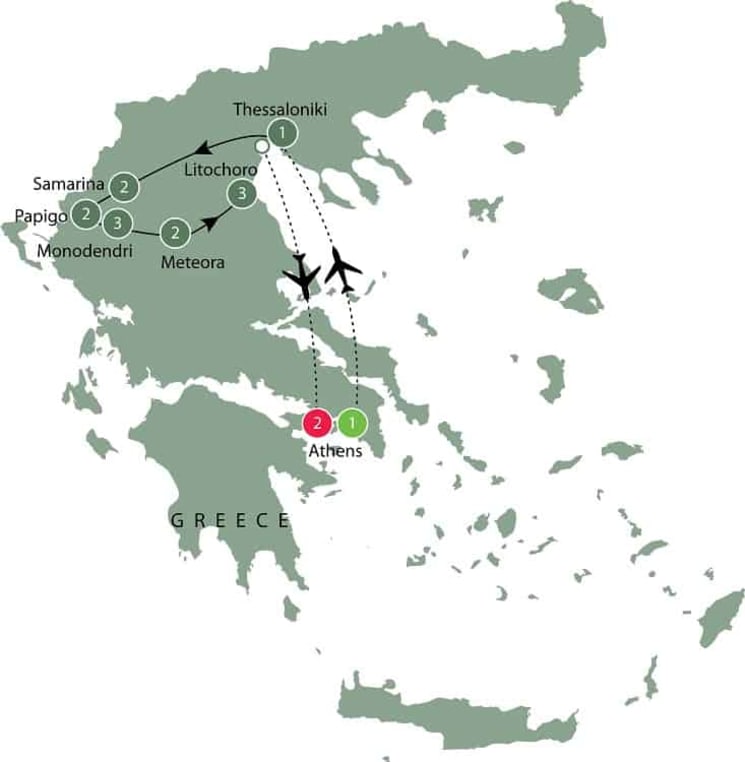
Departure Dates
| Departure Date | Price |
|---|---|
| 03 November 2025 Ends 20 November 2025 • 18 days £6,386 Twin £7,347 Single Available | Selected |
| 16 March 2026 Ends 02 April 2026 • 18 days £6,698 Twin £7,710 Single Available | |
| 01 November 2026 Ends 18 November 2026 • days £7,012 Twin £8,129 Single Available | |
| 02 November 2026 Ends 19 November 2026 • 18 days £6,698 Twin £7,710 Single Available | |
| 15 March 2027 Ends 01 April 2027 • days £7,012 Twin £8,129 Single Available |
Walking in Greece
Join Odyssey Traveller as we go walking in Greece, venturing beyond the famous tourist destination of Athens and the Greek islands’ well-trodden paths—and into the small villages and breathtaking sites of northern mainland Greece. Our guided walking tour will take us to towns carrying the names, ancient sites, and cultural marks of the Hellenic Republic’s long history and incredible mythology—Western Macedonia, Ioannina, Epirus, Meteora, and even the slopes of Mount Olympus.
After city tours in Athens and Thessaloniki, we will begin our walking tour in earnest in the mountainous municipality of Grevena in Western Macedonia, a truly small town (fewer than 200 residents). We will walk through lush forests and up mountain slopes, along lakefronts and beach shores, heading to small waterfalls and clear springs, and up viewpoints to see incredible geological formations such as the Vikos Gorge and the clifftop monasteries of Meteora, a UNESCO World Heritage Site.
We will enjoy meals at local tavernas and try sumptuous dishes featuring local specialties. We will also have days where we will have picnic lunches, sitting in the midst of beautiful sceneries, and free time to explore the villages on our own. We will then loop back to Thessaloniki and Athens, our city starting points.
This small group tour will be accompanied by an Odyssey Program Leader and local guides who will impart their knowledge about the places we will visit.
Odyssey Traveller has been serving global travellers since 1983. Odyssey conducts educational tours with small groups of mature and senior travellers who are travelling with their partner or as a solo traveller. Odyssey's small group tours focus on history, culture and architecture. Group size is typically between 6 to 12 people. This article on fitness and choosing women's walking shoes are likely to be helpful for the reader. The cost of the tour is inclusive of all entrances (unless otherwise indicated), tipping, and majority of the meals.
Tour Highlights
Athens
This tour begins in Athens, the capital and largest city of the modern-day Greek Republic. Thousands of years ago, when Hellas was not a single unified nation, Athens was one of its most important self-governing city-states (poleis; singular form: polis). The cradle of democracy, birthplace of prominent philosophers such as Socrates and Plato, Athens was the centre of Greek civilised life and the wellspring of the artistic, philosophical, and intellectual ideas that still guide us to this day. Here we will see city highlights such as the Acropolis and the Temple of Zeus.
Thessaloniki
Thessaloniki, located 520 kilometres north of Athens, is Greece's second largest city. Formerly known as Salonika and Thessalonica, it was founded in 316 BC and named after a sister of Alexander the Great. It was once the capital of the Roman province of Macedonia and prospered under the Byzantine Empire. We will see the White Tower of Thessaloniki, the symbol of the city, located on its waterfront, formerly a Byzantine and Ottoman fortification, and stroll in Ano Poli, Thessaloniki's old town, a beautiful mix of traditional buildings and monuments dating from the city's Byzantine and Ottoman eras.
Portitsa Gorge
We will begin our walk from the village of Spilaio (Grevena, Western Macedonia) to the Portitsa Stone Bridge, using an old stone path that the locals used for centuries in order to access the springs of the Venetikos river. There are two giant rocks standing at the entrance of the Portitsa gorge, considered one of the most beautiful locations in northern Greece.
Papigo
Papigo (also spelled Papingo), located inside the Vikos–Aoös National Park, is considered a mountain paradise and attracts many hikers and mountaineers all over the world.
We will go for a hike in the Aoos Gorge, formed by the steady flow of the Aoos River from which it gets its name. The river is surrounded by greenery, which makes for a relaxing and captivating backdrop for our walk
We will also visit Papigo's Ovires natural pools, created naturally by the erosions of the limestone rock bed caused by the flowing stream of the Rogovo. Locals created barriers, allowing water levels to rise and create swimming pools that can be enjoyed during the summer.
Vikos Gorge
This will be followed by a morning hike from Papigo to Voidomatis Spring at the bottom of Vikos Gorge. This is a relatively easy, relaxing hike, as we walk surrounded by the verdant forests, ending in the clear, blue-green waters of the spring in the village of Vikos.
We will also walk to the Stone Forest, which shows layers of natural rock formations that look like a literal forest, and onwards to the Oxia viewpoint, which offers a breathtaking view of the Vikos Gorge.
The Vikos Gorge, which begins in Monondendri and ends in Vikos, has a depth ranging from 120 to 490 metres, carved by the Voidomatis River. The Vikos Gorge is a deep, cross-section of a mountain, and we will be able to spot the rock formations exposed on its slopes from our vantage point.
Meteora
The UNESCO World Heritage Site of Meteora, sharing an etymological root as meteor, means "suspended in the air", which describes this unique geological formation. Meteora's enormous rock columns are home to a large complex of Eastern Orthodox monasteries. These monasteries--24 originally, with six functioning--were built on top of these natural pillars around the 15th century.
We will explore this unique landscape on foot, following the hiking paths of the ancient monks. We will also have the opportunity to visit one of these clifftop monasteries.
Mount Olympus
We will begin at the base of Mt Olympus, Greece’s highest mountain, with a visit to the Olympus National Park Information Center. Here we will learn more about the history, mythology, geology, and the flora and fauna of the area.
We will take a drive to the eastern slopes of Olympus, where we will begin our hike to the Enipeas Gorge. On the way to the canyon, we will pass through lush greenery, wooden bridges, natural pools, and small waterfalls.
This is a great entry to Odyssey Traveller’s existing collection of walking holidays. Odyssey Traveller offers a number of small group European walking tours that appeal to a range of fitness levels.
It’s hard to beat the pleasure of a walking tour. While we appreciate the comfort and speed of a coach or train, exploring a new place on foot means that, wherever you go, you will properly discover the sights, sounds, and smells of a place visited. Individual moments will be more memorable, there will be time to appreciate the beauty of nature, and you will also likely find yourself chatting with companions.
The following tours may be of interest:
- Channel Islands
- Rural Britain
- Walking the Camino (St James)
- see other walking tours here
We also have other tours and holidays in Greece that will take you to Corfu and the Ionian Islands, the Aegean Sea, and beautiful Santorini.
- Greece small group tour
- Santorini, Crete, and Cyprus
- see other tours to Greece here
For more details, click the ‘Top 5’ or ‘Itinerary’ buttons above! If you’re keen to experience this tour, please call or send an email. Or, to book, simply fill in the form on the right hand side of this page.
Articles published by Odyssey Traveller for Walking and Hiking tours for seniors
- Selecting walking shoes for women
- Footwear and walking shoes
- What to pack when travelling
- Maintaining muscle fitness in senior and mature age travellers
- Selecting socks for walking
- Six great short walks in Britain
- Preparing for a walking holiday
- Pilgrim walks in Europe
- Nine European Pilgrimage Routes
Articles about Greece published by Odyssey Traveller
- Questions about Greece: A Definitive Guide for Travellers
- Exploring Ancient Cities
- Dawn of Greek Civilisation
- Creating Athens
- History of Santorini
- Crete History for Travellers
- Bronze Age Civilisations of the Eastern Mediterranean Islands
- Greek Islands and Cyprus: Discovering the East Mediterranean
For all the articles Odyssey Traveller has published for mature aged and senior travellers, click through on this link.
External articles to assist you on your visit to Greece
Gallery
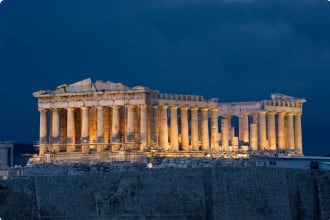

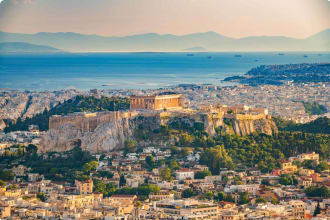
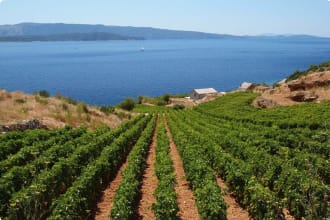
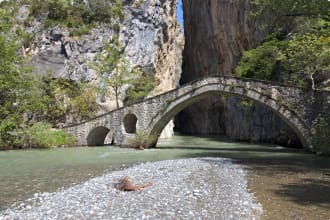

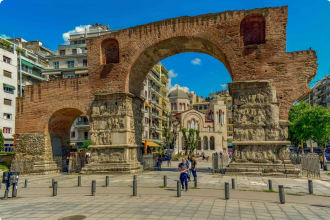

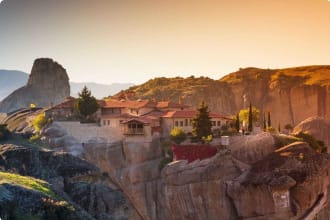
Itinerary
18 days
Day 1: Athens
Accommodation: Hotel Stanley or similar
We make our own way to our hotel in Athens, Greece. With our Odyssey Program Leader, we sit down for our Welcome Dinner at a local taverna.
(D)
Day 2: Athens - Thessaloniki
Accommodation: Capsis or similar
After a sumptuous breakfast at the hotel, we will head out to enjoy a city tour of Athens.
Athens is the capital and largest city of the modern-day Greek Republic, but thousands of years ago, when Hellas was not a single unified nation, Athens was one of its most important self-governing city-states (poleis; singular form: polis). The cradle of democracy, birthplace of prominent philosophers such as Socrates and Plato, Athens was the centre of Greek civilised life and the wellspring of the artistic, philosophical, and intellectual ideas that still guide us to this day.
Among the city highlights we will visit are:
- The archaeological site of Acropolis – the ruins of an ancient fortified city centre built on top of a hill dominating modern Athens
- Acropolis Museum – housing collections focused on the archaeological findings at the Acropolis
- Temple of Zeus – one of the largest temples ever built in the ancient world
- Athens National Garden – the “green heart” of Athens, a sprawling garden covering 24 hectares and which was once called the royal garden of Amalia, wife of Otto I, the first king of modern Greece
- Parliament House – located near the Garden, originally built as a royal palace of Otto I
After our tour of Athens, we will transfer to the airport to board our flight to Thessaloniki. (B, D)
Day 3: Thessaloniki
Accommodation: Capsis or similar
Thessaloniki, located 520 kilometres north of Athens, is Greece’s second largest city. Formerly known as Salonika and Thessalonica, it was founded in 316 BC and named after a sister of Alexander the Great. It was once the capital of the Roman province of Macedonia and prospered under the Byzantine Empire.
Today we will have a chance to explore this long history on a city tour of Thessaloniki.
We will see and visit the city’s major landmarks, including:
- the White Tower of Thessaloniki – the symbol of the city, located on its waterfront, formerly a Byzantine and Ottoman fortification
- Galerius Arch (Kamara) – a triumphal arch commissioned by Emperor Galerius for his victory against the Sassanid Empire in the 3rd century
- Rotunda – a monument neighbouring the Arch, also commissioned by Galerius and known as the Greek Orthodox Church of the Rotunda
- Ano Poli – Thessaloniki’s old town, a beautiful mix of traditional buildings and monuments dating from the city’s Byzantine and Ottoman eras.
- On the upper edge of the Ano Poli are the city walls that are inscribed as a UNESCO World Heritage Site. From here we will be treated to a marvelous view of Thessaloniki.
- We will also have a short stop at the Agios Demetrius Byzantine church, which houses some spectacular Byzantine mosaics
The afternoon is free for us to walk around and explore the city at our own pace.
(B)
Day 4: Thessaloniki – Grevena – Samarina
Accommodation: Hotel Aristomenis or similar
Today we will be beginning our walking tour.
From Thessaloniki, we will transfer to the mountainous municipality of Grevena and its village of Spilaio. This is a very small town; the last available census (2011) listed fewer than 200 residents.
We will begin our walk from the village of Spilaio to the Portitsa Stone Bridge, using an old stone path that the locals used for centuries in order to access the springs of the Venetikos river. There are two giant rocks standing at the entrance of the Portitsa gorge, considered one of the most beautiful locations in northern Greece. This is a relatively easy five-km walk, which will take us approximately 2 hours.
After our walk, we will enjoy a delicious lunch in Grevena, with mushrooms specialties in a traditional restaurant.
We will then drive to scenic Samarina, situated at 1450-m altitude, considered the highest village of Greece and all the Balkan countries.
(B, L, D)
Day 5: Samarina
Accommodation: Hotel Aristomenis or similar
Samarina is located on Mount Smolikas, the second-highest mountain in Greece. Today we will be hiking on the mountain slopes, starting from the small village of Philipaioi.
We will take a short drive and then a walk to a monument of WW II, dedicated to the memory of the Greek generals and officers who were killed in the battles of 1940-41. The monument is situated on the top of a hill called Annitsa, at an altitude of 1700 metres.
We will be provided lunch during this hike.
(B, L, D)
Day 6: Samarina – Distrato - Papigo
Accommodation: Nikos & Ioulia Guesthouse or similar
After breakfast, we will start our walk from the village of Samarina towards the village of Distrato, through shaded forest and the mountain slopes of the Vasilitsa mountain. This is a distance of approximately 10 kilometres. As in Day 5, we will also have our lunch today during the hike, in the midst of beautiful scenery.
From Distrato, we will drive to Papigo (also spelled Papingo) through a mountainous road. This will take approximately three hours. Papigo, located inside the Vikos–Aoös National Park, is considered a mountain paradise and attracts many hikers and mountaineers all over the world.
Upon our arrival in Papigo in the afternoon, we will have some free time before turning in for the night.
(B, L, D)
Day 7: Papigo - Konitsa – Papigo
Accommodation: Nikos & Ioulia Guesthouse or similar
After breakfast at the guesthouse, we will drive from Papigo to Konitsa, a town in Epirus, Greece near the Albanian border.
We will go for a hike in the Aoos Gorge, formed by the steady flow of the Aoos River from which it gets its name. The river is surrounded by greenery, which makes for a relaxing and captivating backdrop for our walk today. We will begin at the Konitsa Stone Bridge, heading to the Monastery of Stomiou. The monastery was originally built on the opposite side in the 16th century, and transferred to its present location over a narrow ravine on the bottom of the gorge in the 18th century.
We will return back through the same path, and return by coach again to Papigo. This will give us some free time to explore the village further at a relaxing pace.
(B, L, D)
Day 8: Aristi - Kleidonia Bridge – Papigo
Accommodation: Nikos & Ioulia Guesthouse or similar
We will take a short drive from Papigo village to Aristi Bridge, and begin our easy hike from Aristi to Kleidonia Bridge, a stone bridge alongside the Voidomatis River at the end of Vikos Gorge.
We will have lunch in a local tavern right next to the river, and enjoy the special dish of the area–trout!
We will also have free time in Papigo village, before going on a sunset walk to admire the coloured limestone of the Red Rock.
(B, L)
Day 9: Papigo - Vikos - Monodendri
Accommodation: Selini guesthouse or similar
Today we will be visiting Papigo’s Ovires natural pools. These pools were created naturally by the erosions of the limestone rock bed caused by the flowing stream of the Rogovo. Locals created barriers, allowing water levels to rise and create swimming pools that can be enjoyed during the summer. We will have an hour to enjoy this spot.
This will be followed by a morning hike from Papigo to Voidomatis Spring at the bottom of Vikos Gorge. This is a relatively easy, relaxing hike, as we walk surrounded by the verdant forests, ending in the clear, blue-green waters of the spring in the village of Vikos.
Upon exiting the village, we drive to the village of Monodendri, built at a height of 1,060 metres and which retains much of its traditional stone architecture.
In the afternoon, we will explore the village and walk to the abandoned 15th-century monastery of Agia Paraskevi, which provides a view of the village. We will also walk to the Stone Forest, which shows layers of natural rock formations that look like a literal forest, and onwards to the Oxia viewpoint, which offers a breathtaking view of the Vikos Gorge.
The Vikos Gorge, which begins in Monondendri and ends in Vikos, has a depth ranging from 120 to 490 metres, carved by the Voidomatis River. The Vikos Gorge is a deep, cross-section of a mountain, and we will be able to spot the rock formations exposed on its slopes from our safe vantage point.
(B, D)
Day 10: Monodendri - Kipoi - Monodendri
Accommodation: Selini guesthouse or similar
We will have a visit to the Rizario Foundation, founded in 1841 by brothers George and Manthos Rizaris. The brothers were born in Monodendri, made a fortune in trade, and became financial supporters of the Greek Revolution. The Foundation is housed in a 19th-century mansion and includes the Rizarios Exhibition Center and the Rizarios Handicraft School. The Exhibition Center has photography collections and displays the original stereoscopic cameras that British photographers used to capture the first modern Olympic Games in Greece in 1896.
After this cultural visit, we go on a hike to the Arch Stone Bridge of Zagori. This is a beautiful three-arch bridge in the village of Kipoi, unique in this Greek region and built in the 19th century.
We will have our lunch break in Kipoi, which has the lowest elevation in the region of Zagori, surrounded by rivers.
From the lowest village, we will move to the highest, Vradeto (1340 metres). From there, we follow a gentle, well-marked path to the Beloi viewpoint, where we can enjoy the most impressive panoramic views over the Vikos Gorge.
(B, L, D)
Day 11: Monodendri – Ioannina – Metsovo - Meteora
Accommodation: Hotel Meteoritis or similar
After an early breakfast, we will depart on a drive to Ioannina, capital of Epirus, located on Lake Pamvotida (or Pamvotis). Sitting within the lake is a small inhabited island, also named Ioannina.
The city’s founding was traditionally ascribed to the Byzantine emperor Justinian in the 6th century, though archaeological evidence suggests earlier, Hellenistic settlements.
We will free time to walk around the Ioannina Castle, the city’s fortified old town, the lake front, and to have some lunch! If time permits, we can also visit the small island on the lake.
After lunch, we will drive to the picturesque village of Metsovo, located at an altitude of 1,200 metres, nestled in the Pindus mountains. We will again have free time to walk in the alleys or have coffee in one of the traditional cafes. We can also organise a wine tasting tour in one of the most famous Greek wineries, the Averoff Winery (extra cost applies).
We depart from Metsovo in the afternoon to visit the UNESCO World Heritage Site of Meteora. Meteora, sharing an etymological root as meteor, means “suspended in the air”, which somehow describes this unique geological formation. We will explore this further on Day 12.
We will be staying in the heart of Meteora valley, in the village of Kastraki. We will have dinner in one of the traditional taverns.
(B, D)
Day 12: Meteora
Accommodation: Hotel Meteoritis or similar
Meteora’s enormous rock columns are home to a large complex of Eastern Orthodox monasteries. These monasteries–24 originally, with six functioning–were built on top of these natural pillars, with great difficulty, around the 15th century.
We will explore this unique landscape on foot, following the hiking paths of the ancient monks. We will also have the opportunity to visit one of these clifftop monasteries.
We will have a picnic lunch, then our afternoon is free for us to relax.
Towards the end of the day, we will enjoy an hour-long sunset tour of the area, with stops at the most beautiful viewpoints so we can take gorgeous sunset photos from the top of the rocks.
We will have dinner in one of the local taverns.
(B, L, D)
Day 13: Meteora - Litochoro
Accommodation: Hotel Giannoulis or similar
We will still have some time today to enjoy in Meteora. We suggest a time for walking or shopping, or a visit to the museum of Geological History of Meteora (free of charge) or the Museum of Natural History & Mushrooms (which has an entrance fee). This visit can be combined with truffle hunting in the forest or mushrooms tasting inside the museum, or an additional hike–depending on the preference of the group.
After our free time (or activities), we will depart for Litochoro, a town located at the foot of mythical Mount Olympus, the highest mountain in Greece. We will be hiking around Mount Olympus in the next two days.
Our evening is free to spend at our leisure.
(B)
Day 14: Litochoro - Orlias Gorge - Litochoro
Accommodation: Hotel Giannoulis or similar
After breakfast, we will transfer to the starting point of our hike. We will hike to the lush Orlias Gorge, a forested canyon which runs through the northeastern part of Mount Olympus, and climb up to the Red Rock waterfall, where the water falls from a height of 20 metres to a natural pool below.
We will have a picnic lunch, and if time permits we can have coffee at the seaside village of Limani Litochorou. We can walk on the village’s sandy beach until it gets dark, and return to Litochoro.
(B, L)
Day 15: Litochoro - Enipeas Gorge - Litochoro
Accommodation: Hotel Giannoulis or similar
We will begin at the base of Mount Olympus, with a visit to the Olympus National Park Information Center. Here we will learn more about the history, mythology, geology, and the flora and fauna of the area.
We will take a drive to Prionia on the eastern slopes of Olympus, where we will begin our hike to the Enipeas Gorge. On the way to the canyon, we will pass through lush greenery, wooden bridges, natural pools, and small waterfalls. We will visit the 16th-century Monastery of Agios Dionysios, before returning to Litochoro.
This is a moderate to hard trek but can be shortened, depending on group decision and the weather conditions.
(B, L)
Day 16: Litochoro – Thessaloniki - Athens
Accommodation: Hotel Stanley or similar
We will be driving from Litochoro to Thessaloniki. En route, and depending on the time we have, we can visit
- Dion, one of the most important archaeological sites in Greece (extra cost applies); or
- stop at the National Park of Axios Delta (the wetland where the three rivers meet: Axios, Aliakmonas, Loudias), and have short walk, photography, bird watching and lunch in a traditional local fish tavern
We can also head straight to the airport to catch our flight to Athens. In Athens, we will have our group dinner.
(B, D)
Day 17: Athens
Accommodation: Hotel Stanley or similar
Today is a free day to explore Athens.
In the evening we will meet again as a group for our farewell dinner.
(B, D)
Day 18: Athens
Our tour and services end after breakfast.
At the agreed time, we will transfer to the airport to board our international flights out of Greece.
(B)
Includes / Excludes
What’s included in our Tour
- 17 nights of hotel accommodation.
- 17 breakfasts, 8 lunches and 12 dinners.
- Transport and field trips as indicated.
- Applicable entry fees and services of local guides.
- Services of a Tour Leader.
- Service charges and gratuities.
- Detailed tour information booklet.
What’s not included in our Tour
- Return economy class international airfare and departure taxes.
- Comprehensive travel insurance.
- Items of personal nature such as laundry and telephone calls.
Participants must be in excellent health, extremely mobile and live an active lifestyle. Program activities may include up to 6 hours of continuous strenuous, moderate-to-fast paced activities per day on varied terrain.
Book now
Make it a private tour
Easing your journey
Crossing international borders with restrictions
The list of requirements to travel internationally has changed and will continue to change for several years. Odyssey is here to assist you in managing your way through these requirements:
For more information see our Crossing international borders with restrictions page.
Book With Confidence
If less than 30 days before your tour starts you are unable to travel as a result of Government travel restrictions, Odyssey Traveller will assist you with a date change, provide you with a credit or process a refund for your booking less any non-recoverable costs.
See Terms and conditions for details.
Peace of Mind Travel
The safety of our travellers, tour leader, local guide and support staff has always been our top priority and with the new guidelines for public health and safety for keeping safe for destinations around the world, we’ve developed our plan to give you peace of mind when travelling with us.
See Peace of Mind Travel for details.
Reading List Download PDF
The Oxford History of Greece & the Hellenistic World
John Boardman (Editor), Jasper Griffin (Editor), Oswyn Murray (Editor)
From the epic poems of Homer to the glittering art and architecture of Greece's Golden Age, to the influential Roman systems of law and leadership, the classical Greek world established the foundations of our culture as well as many of its most enduring achievements.
Now, in this vivid volume, readers can embrace the spirit of the classical world, from the eighth to the first centuries B.C., a period unparalleled in history for its brilliance in literature, philosophy, and the visual arts. This work also treats the Hellenization of the Middle East by the monarchies established in the area conquered by Alexander the Great. The editors, all celebrated classicists, intersperse chapters on political and social history with sections on literature, philosophy, and the arts, and reinforce the historical framework with maps and historical charts. Moreover, the contributors--thirty of the world's leading scholars--present the latest in modern scholarship through masterpieces of wit, brevity, and style. Together with hundreds of excellent illustrations, these entries provide both a provocative and entertaining window into our classical heritage.
The Rise and Fall of Classical Greece
Josiah Ober
Lord Byron described Greece as great, fallen, and immortal, a characterization more apt than he knew. Through most of its long history, Greece was poor. But in the classical era, Greece was densely populated and highly urbanized. Many surprisingly healthy Greeks lived in remarkably big houses and worked for high wages at specialized occupations. Middle-class spending drove sustained economic growth and classical wealth produced a stunning cultural efflorescence lasting hundreds of years.
Why did Greece reach such heights in the classical period--and why only then? And how, after "the Greek miracle" had endured for centuries, did the Macedonians defeat the Greeks, seemingly bringing an end to their glory? Drawing on a massive body of newly available data and employing novel approaches to evidence, Josiah Ober offers a major new history of classical Greece and an unprecedented account of its rise and fall.
Ober argues that Greece's rise was no miracle but rather the result of political breakthroughs and economic development. The extraordinary emergence of citizen-centered city-states transformed Greece into a society that defeated the mighty Persian Empire. Yet Philip and Alexander of Macedon were able to beat the Greeks in the Battle of Chaeronea in 338 BCE, a victory made possible by the Macedonians' appropriation of Greek innovations. After Alexander's death, battle-hardened warlords fought ruthlessly over the remnants of his empire. But Greek cities remained populous and wealthy, their economy and culture surviving to be passed on to the Romans--and to us.
A compelling narrative filled with uncanny modern parallels, this is a book for anyone interested in how great civilizations are born and die.
Modern Greece: What Everyone Needs to Know
Stathis Kalyvas
When Greece's economic troubles began to threaten the stability of the European Union in 2010, the nation found itself in the center of a whirlwind of international finger-pointing. In the years prior, Greece appeared to be politically secure and economically healthy. Upon its emergence in the center of the European economic maelstrom, however, observers and critics cited a century of economic hurdles, dictatorships, revolutions, and more reasons as to why their current crisis was understandable, if not predictable. The ancient birthplace of democracy and countless artistic, literary, philosophical, and scientific developments had struggled to catch-up to its economically-thriving neighbors in Western Europe for years and quickly became the most seriously economically-troubled European country following a fiscal nosedive beginning in 2008. When the deficit and unemployment skyrocketed, the resulting austerity measures triggered widespread social unrest.
The entire world turned its focus toward the troubled nation, waiting for the possibility of a Greek exit from the European Monetary Union and its potential to unravel the entire Union, with other weaker members heading for the exit as well. The effects of Greece's crisis are also tied up in the global arguments about austerity, with many viewing it as necessary medicine, and still others seeing austerity as an intellectually bankrupt approach to fiscal policy that only further damages weak economies.
In Modern Greece: What Everyone Needs to Know®, Stathis Kalyvas, an eminent scholar of conflict, Europe, and Greece combines the most up-to-date economic and political-science findings on the current Greek crisis with a discussion of Greece's history. Tracing the nation's development from the early nineteenth century to the present, the informative question-and answer format covers key episodes including the independence movement of the early nineteenth century, the massive ethnic cleansing in Turkey and Greece following World War I, the German occupation in World War II, the following brutal civil war, the conflict with Turkey over Cyprus, the military coup of 1967, democracy at long last, and the country's entry into the European Union.
Written by one of the most brilliant political scientists in the academy, Modern Greece is the go-to resource for understanding both the current crisis and the historical events that brought the country to where it is today.
Greece: A Short History of a Long Story, 7,000 BCE to the Present
Carol G. Thomas
Greece: A Short History of a Long Story presents a comprehensive overview of the history of Greece by exploring the continuity of Greek culture from its Neolithic origins to the modern era.
~ Tells the story of Greece through individual personalities that inhabited various periods in the lengthy sweep of Greek history
~ Uses an approach based on recent research that includes DNA analysis and analyses of archaeological materials
~ Explores ways in which the nature of Greek culture was continually reshaped over time
~ Features illustrations that portray the people of different eras in Greek history along with maps that demonstrate the physical sphere of Greece and major events in each of the periods
Meteora: The History of the Famous Greek Landmark that Houses Eastern Orthodox Monasteries
Charles River Editors
The Tower of Babel is arguably among the most well-known allegories of the Old Testament. As told by the Book of Genesis, the story revolves around a post-flood batch of Noah's descendants who dwelled in Babylon's Mesopotami, a city erected by King Nimrod. The population multiplied rapidly over the years, and the city's inhabitants fostered the growth of their culture and enhancing the infrastructure of their territories, made easier by the existence of only one common language. Naturally, the pride of the Mesopotamian residents burgeoned, but their contentment, poisoned by their greed and ambition, began to decline. The only way to prevail over this slump, believed a particularly enterprising group of individuals, was to construct a colossal ziggurat (a "rectangular, stepped tower") that would ascend past the clouds and into the heavens. With this tower, they intended to "make a name for" mankind and the untouchable abilities of mere mortals, thereby severing their relationship with God their Creator for good.
According to the Bible, God was far from impressed, and to add insult to injury, the architects behind this attempt deliberately opted for man-made materials, such as brick and tar, rather than stone, timber, and other natural building blocks gifted to them by God. The overblown pomposity and conceit of His subjects had to be ceased at once, lest they stray further away from Him. Thus, as the people slept, God reached down and scooped up handfuls of the slumbering Mesopotamians and strewed them across the continents, creating 70 different nations and tribes. When they awoke, the bewildered residents of the newly birthed nations were speaking in different tongues. With the architects scattered around the globe and now unable to understand one another, construction of the partially built ziggurat came screeching to a halt. It was later dubbed the "Tower of Babel," or the "Tower of Confusion." This miserable monument, which served as a haunting reminder of man's subservience to God, was continuously marred by fire and battered by the elements over the years until it eventually crumbled back into the earth.
Close to 1,850 miles to the west of Babylon, roughly 3,000 years later, yet another group of mere mortals set out on a daring, but seemingly fragile quest to build their homes in a place that - at the very least - symbolically neighbored the Kingdom of God. Evidently, these mortals had earned the Lord's blessings, for there, a smattering of their descendants remain to this day.
Contrary to the builders of Babel, these God-fearing venturers constructed these dwellings with the purpose of wholly devoting their lives to the Lord. More admirable yet, these dwellings were not lofty towers that took dozens of years to assemble, nor were they built atop solid ground; instead, they ranged from small huts to compact complexes perilously perched atop and embedded into the nooks and fissures of stone mountains. This forest of jagged stone pillar, which looms over gorgeous valleys and a lush, densely forested stretch of land, is none other than Meteora, situated in the quaint town of Kalabaka in the northwestern part of Thessaly, Greece.
Meteora: The History of the Famous Greek Landmark that Houses Eastern Orthodox Monasteries looks at the unique place and what life has been like there since the monasteries were built there. Along with pictures depicting important people, places, and events, you will learn about Meteora like never before.
Greek Mythology: A Traveller's Guide from Mount Olympus to Troy
David Stuttard
The Greek myths have a universal appeal, reaching far beyond the time and physical place in which they were created. In this book, the reader is taken on a tour of 22 destinations in Greece and Turkey, from Mount Olympus to Homer's Hades, recounting the tales from Greek mythology and the history associated with each.

